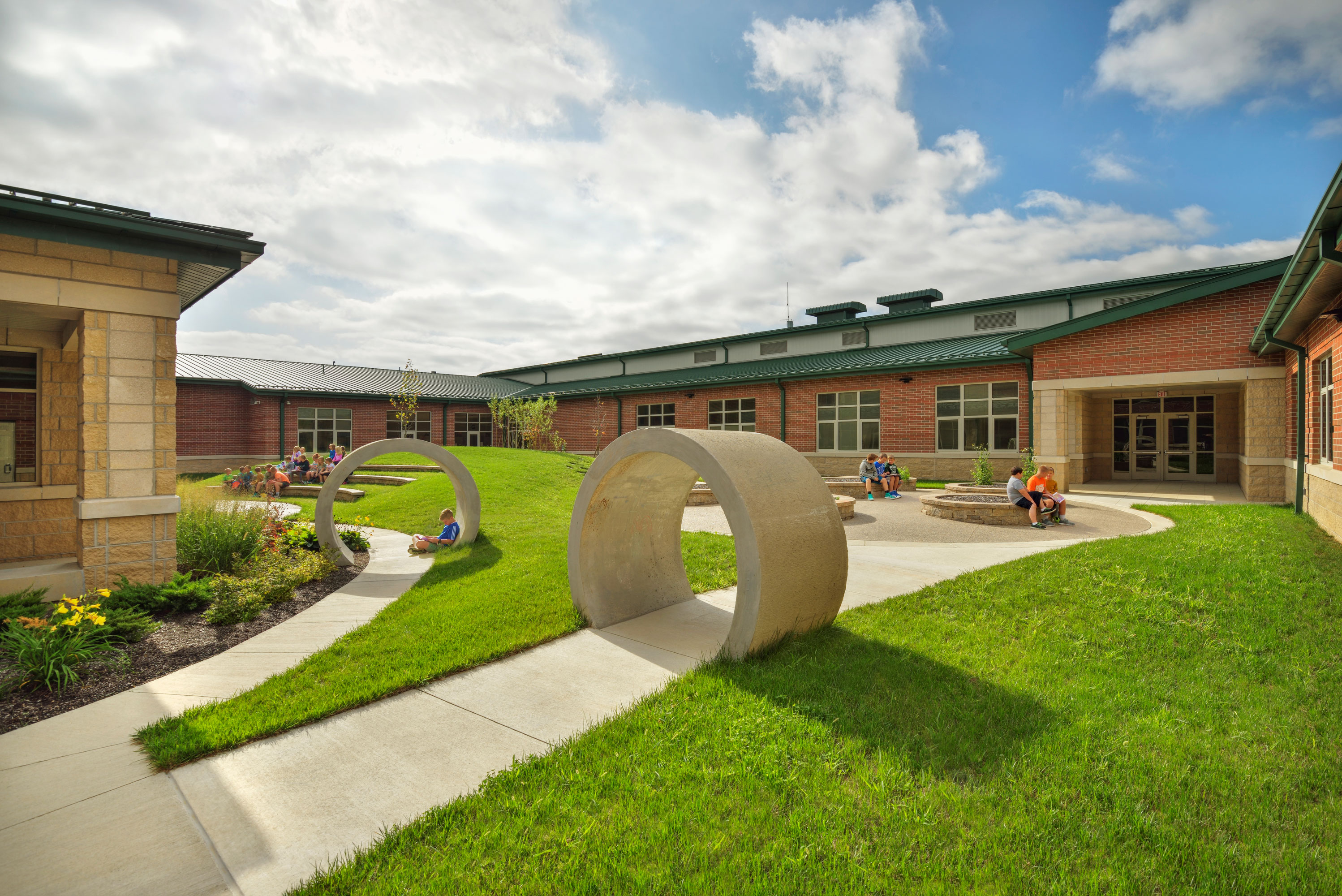
Green school buildings are better for the planet
Green school buildings are better for the planet because they reduce environmental impact, conserve resources and contribute to educating the next generation of environmental stewards.
- Buildings are one of the heaviest consumers of natural resources, using more than 70 percent of electricity and contributing to nearly 40 percent of CO2 emissions in the United States. They account for more than one-quarter of all greenhouse gas emissions, according to the Global Alliance for Buildings and Construction, more than the contribution from either the industrial or transportation sectors.
- The 130,000 schools in the U.S. serve nearly one-sixth of the nation’s population every day. K–12 public school districts operate more than 8.1 billion gross square feet of building area, equivalent to nearly half the area of all U.S. commercial office space, and inhabit an estimated 2 million acres of land.
- The impact of implementing environmentally sensitive practices at these facilities could lead to substantial reductions in natural resource use. Research suggests that schools contribute around 72 million metric tons of CO2 emissions each year. Even a modest reduction in emissions from school operations would be a meaningful step toward curbing climate change. Learn more about driving your school buildings toward zero carbon emissions.
LEED rating system
The LEED rating system for buildings was created to address the negative environmental impacts of design, construction and operation of buildings around the world—and eventually to move the building industry toward regenerative, positive impacts on the environment.
The rating system rewards practices such as reducing energy and water use, implementing recycling during construction and subsequently within building operations, maintaining native and adaptive landscaping, and improving resilience to climate change. LEED also encourages the purchase of sustainably produced, recycled and recyclable materials and products. Learn more about LEED on the USGBC website and in the detailed LEED credit library.